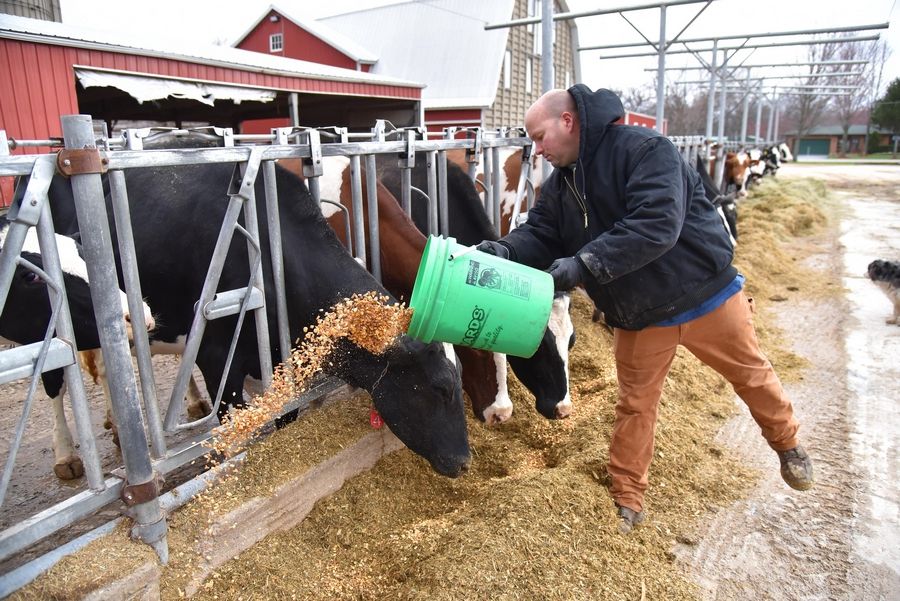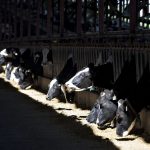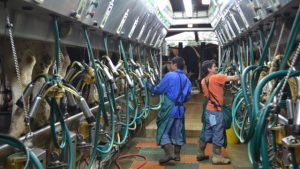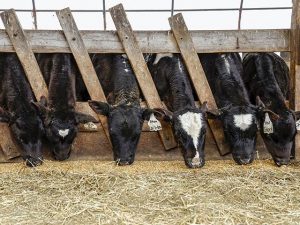
“The financial impact has been huge,” according to Joe Engel of Hampshire, who with his brother, Matt, operates Luck-E Holsteins farm.
For nearly 100 years, four generations of Engels have operated the farm located a couple of miles west of the only traffic light in Hampshire. The brothers milk 160 dairy Holsteins two times every day, 365 days a year.
“There is no pause button on the cows,” Joe Engel says.
But the value of the 1,500 gallons of milk they produce and sell every day has declined 36% in the last three months, much of the drop coming since the state’s stay-at-home order was imposed in March.
That value is set through a combination of federal and state policies and the supply and demand of the market. Because schools — which account for about 7% of the market — and many restaurants are now closed, prices that already had been slumping have plummeted.
The demand for milk has been dropping for at least five years, according to the U.S. Department of Agriculture, and the pandemic could be the death blow to farms that Engel says have been in “survival mode” for years.
The growing popularity of plant-based beverages made from soy, rice and nuts has taken a toll on farms that already were operating on the edge of profitability.
There were hopes 2020 could be a bounce back year for the industry, Engel said. Then the coronavirus arrived.
“This was supposed to be the recovery year,” he said. “Everyone was already depleted and then this hit. There was no way to predict it. There was no point of reference.”
In Wisconsin, dairy farmers are dumping millions of gallons of milk down the drain every day because of the falling demand. About one farm per week in “America’s Dairyland” declared bankruptcy in 2019, according to the American Farm Bureau Federation.
In the meantime, the cost of operating dairy farms have not fallen with the price of the milk.
“The animals need the same amount of care and food. That doesn’t change,” Engel said.
For the Engels, it takes 4½ hours to prepare the farm’s 19 milking machines, rotate the cows through, and clean up before repeating the process again later in the afternoon.
The milk is quickly cooled and stored in a huge stainless steel tank in one of the barns as the cows are milked. From there, it is transferred to a tanker truck that delivers the thick milk to a processing facility twice daily.
Engel says Kane County used to be a hot spot for dairy farms. His father operated Luck-E Holsteins alongside at least a dozen others in the county.
Today, there are only three dairy farms in the county licensed to ship milk. That, he said, hurts the entire community, as every dairy cow translates to $20,000 for the local economy.
“The main street used to be busy,” he says. “Now there a hole where the hardware store was, and there’s a hole next to that.”
He says his five children have shown an interest in continuing the family tradition, and he hopes that option is still available to them.
“It’s kind of a matter of measuring the bad, making adjustments and hoping for the good.”























